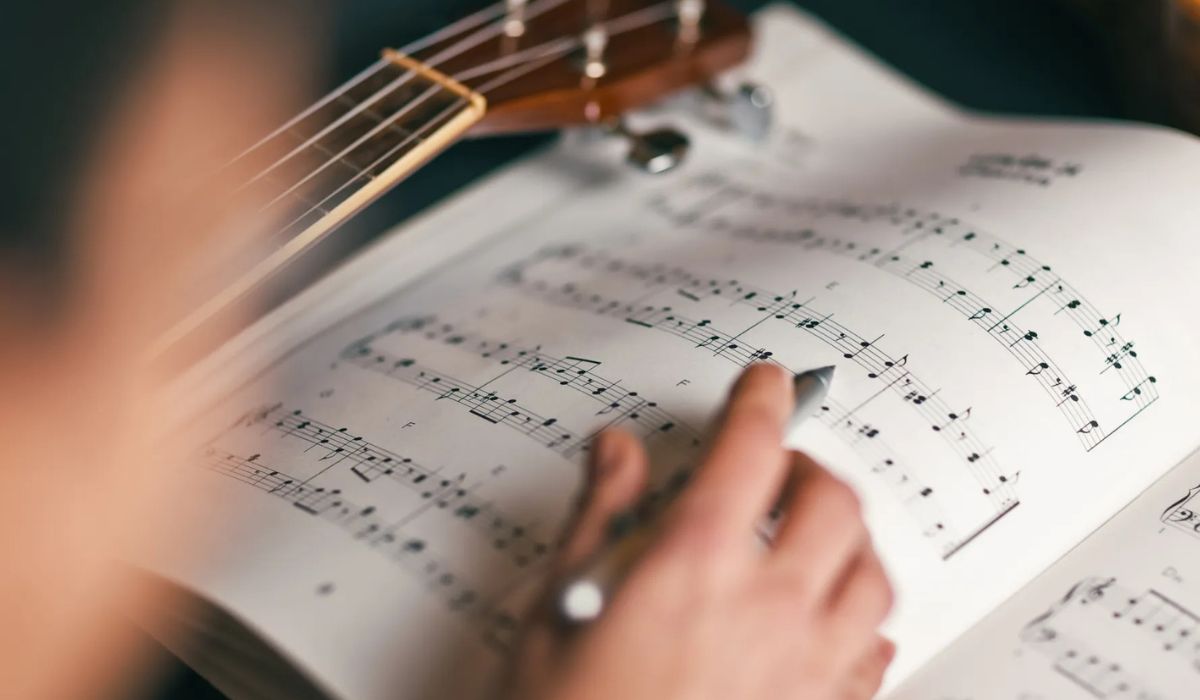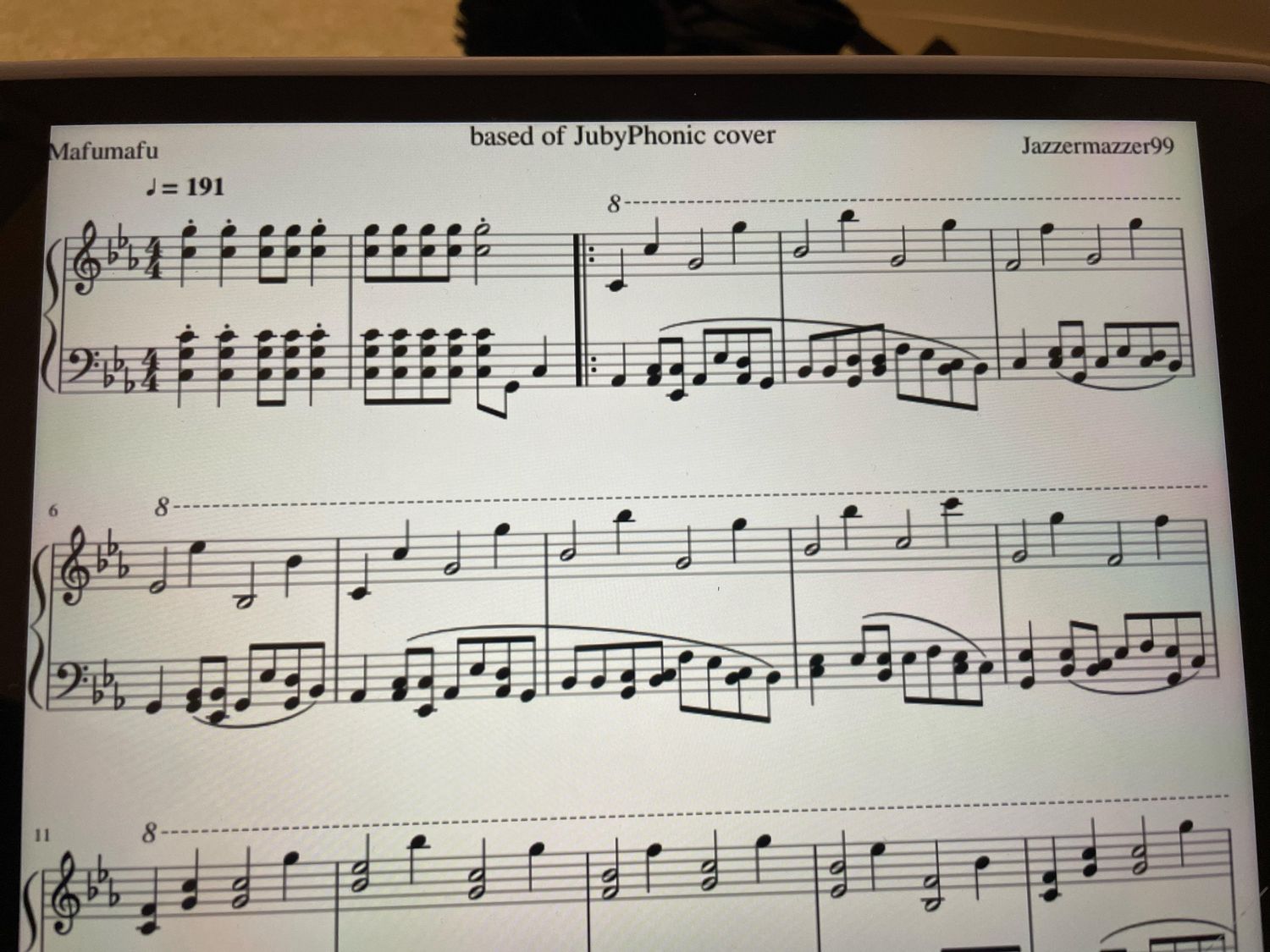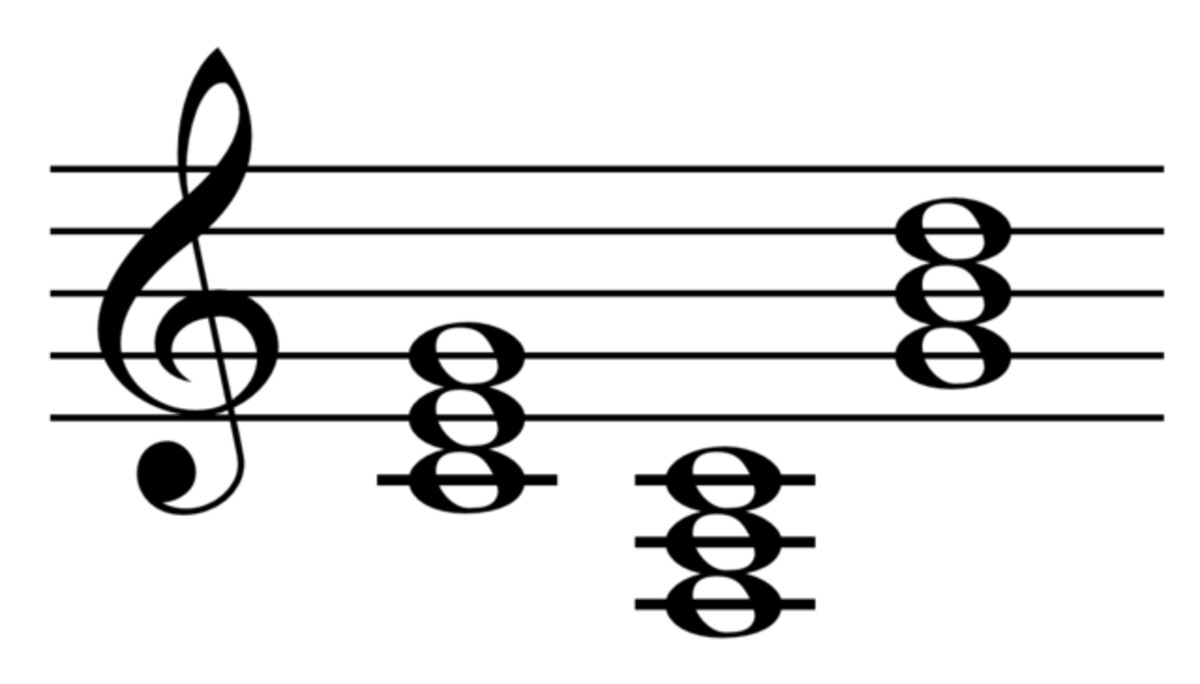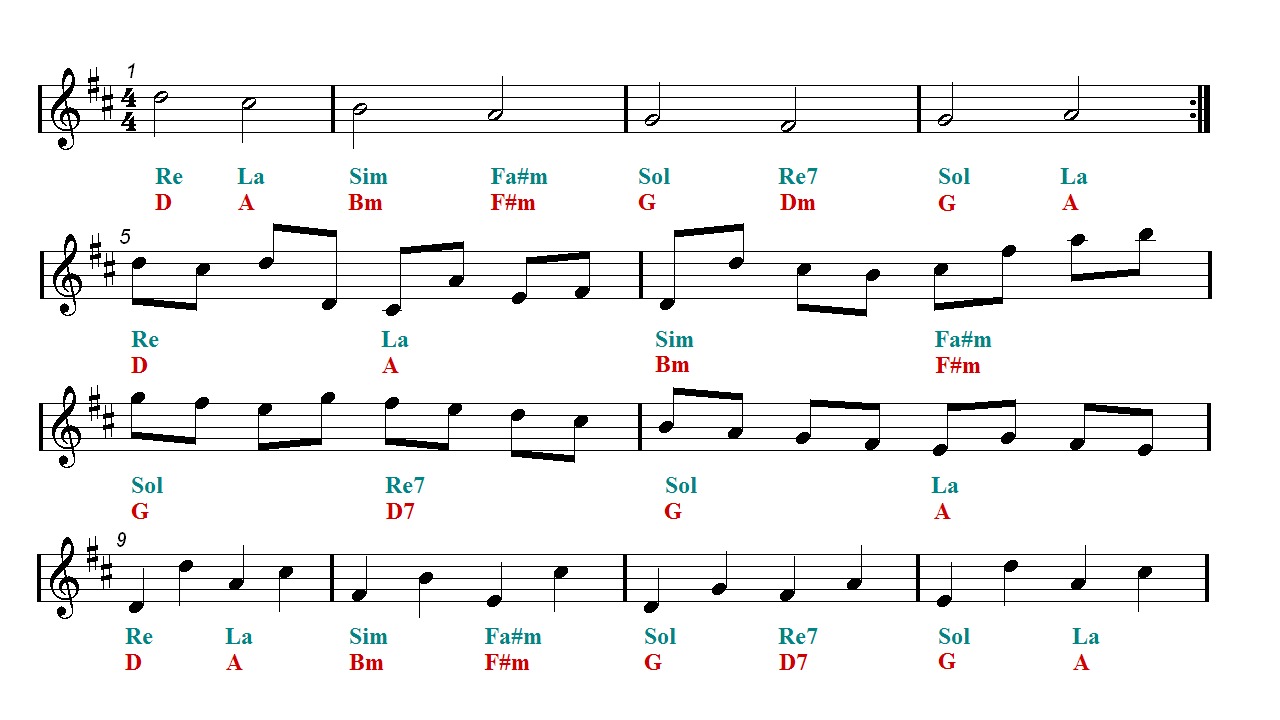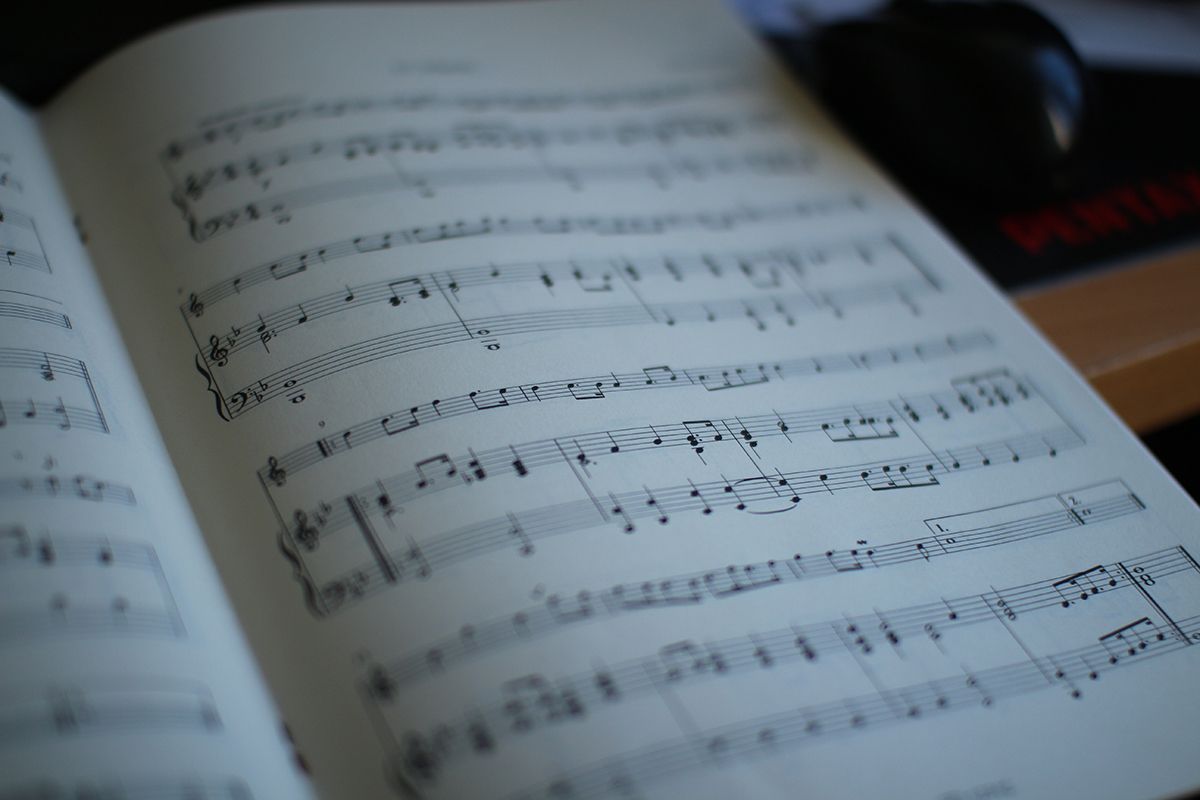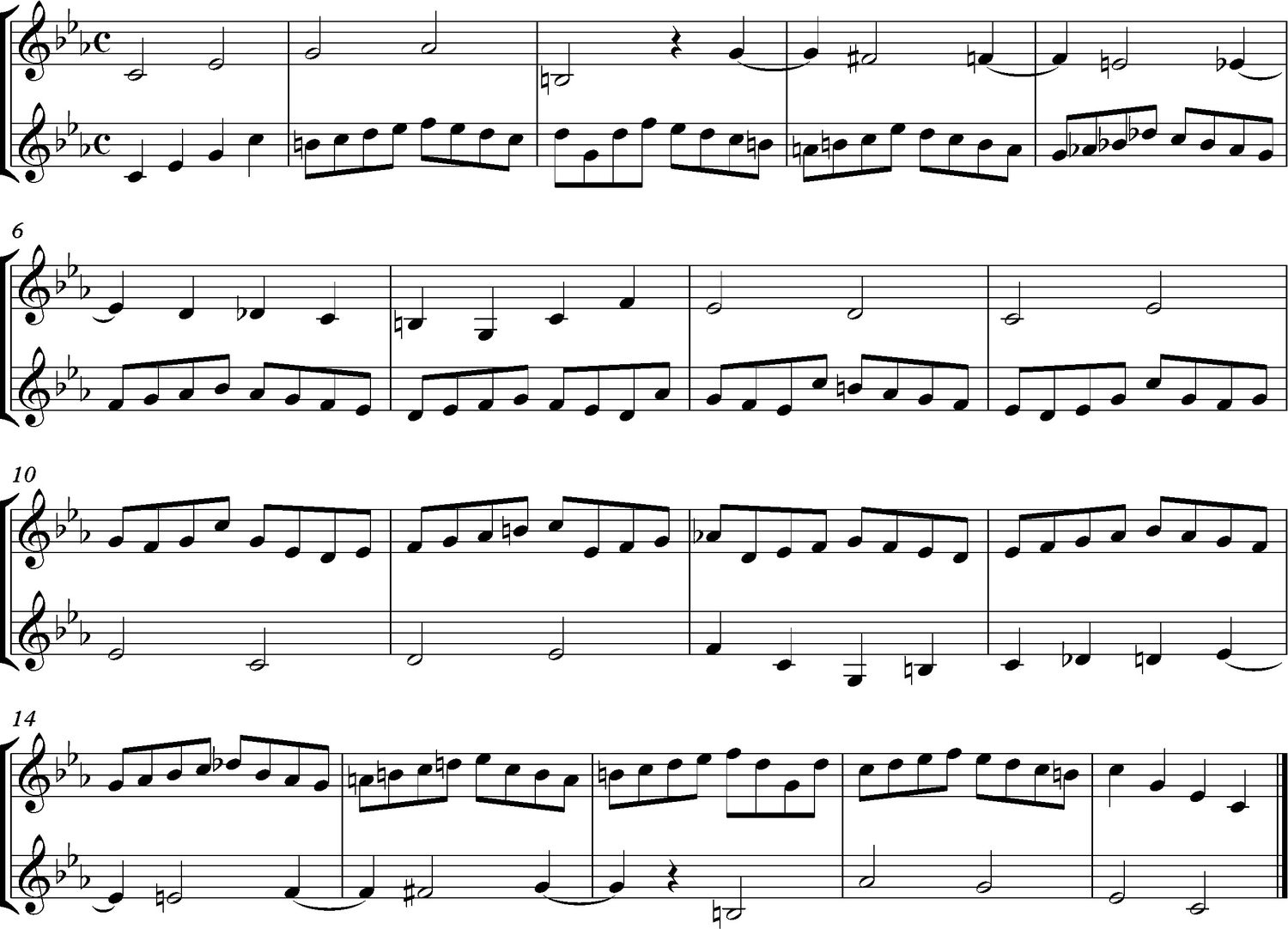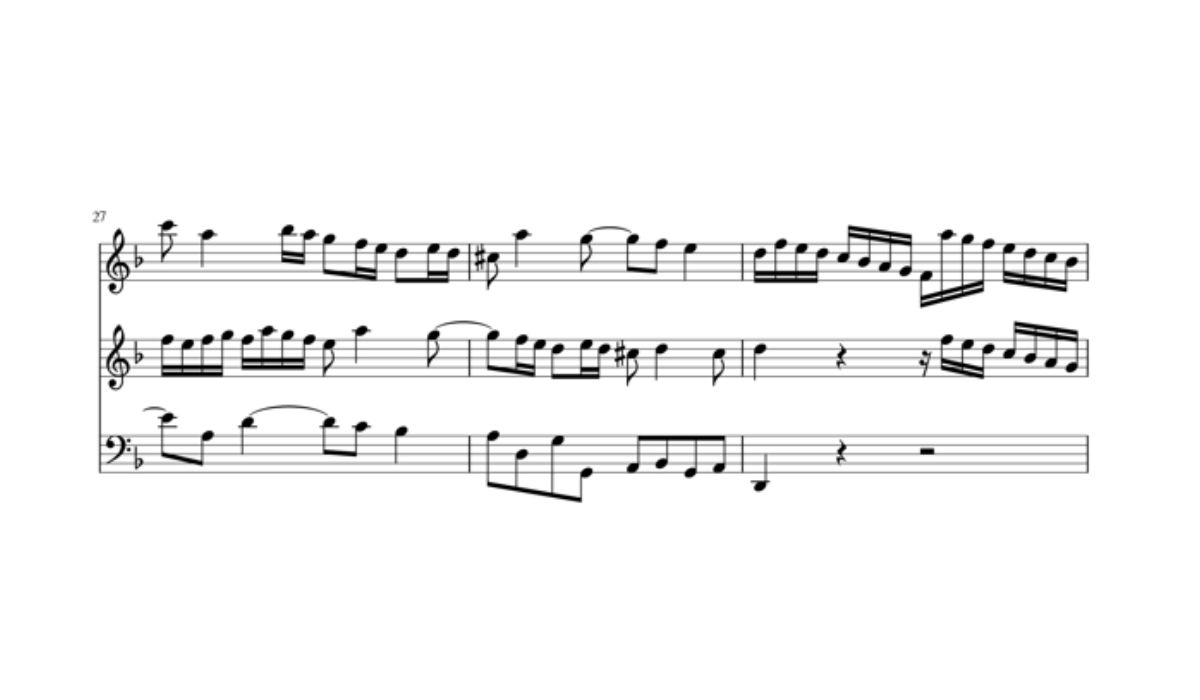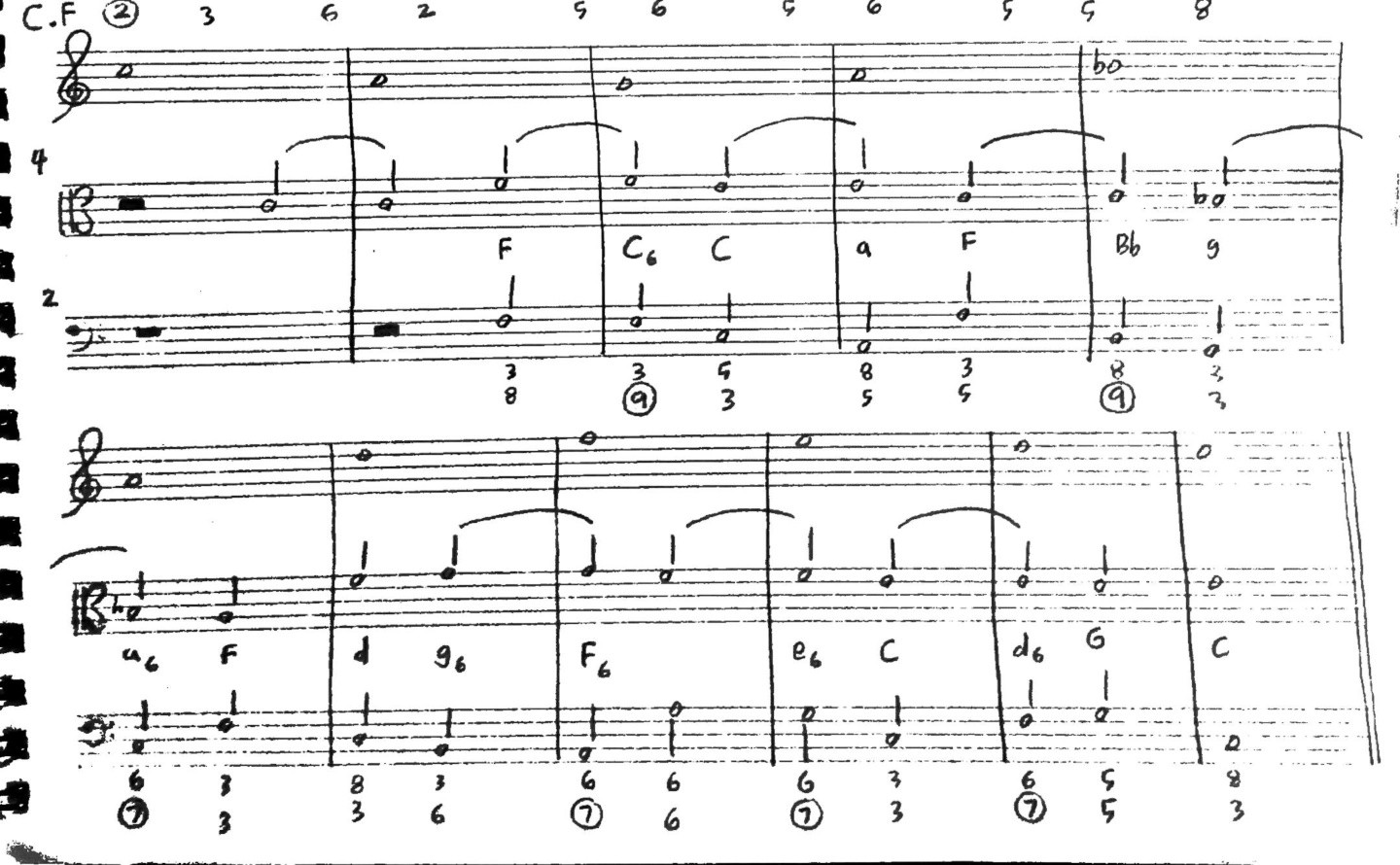Home>Production & Technology>Music Theory>What Is Taught In Music Theory?
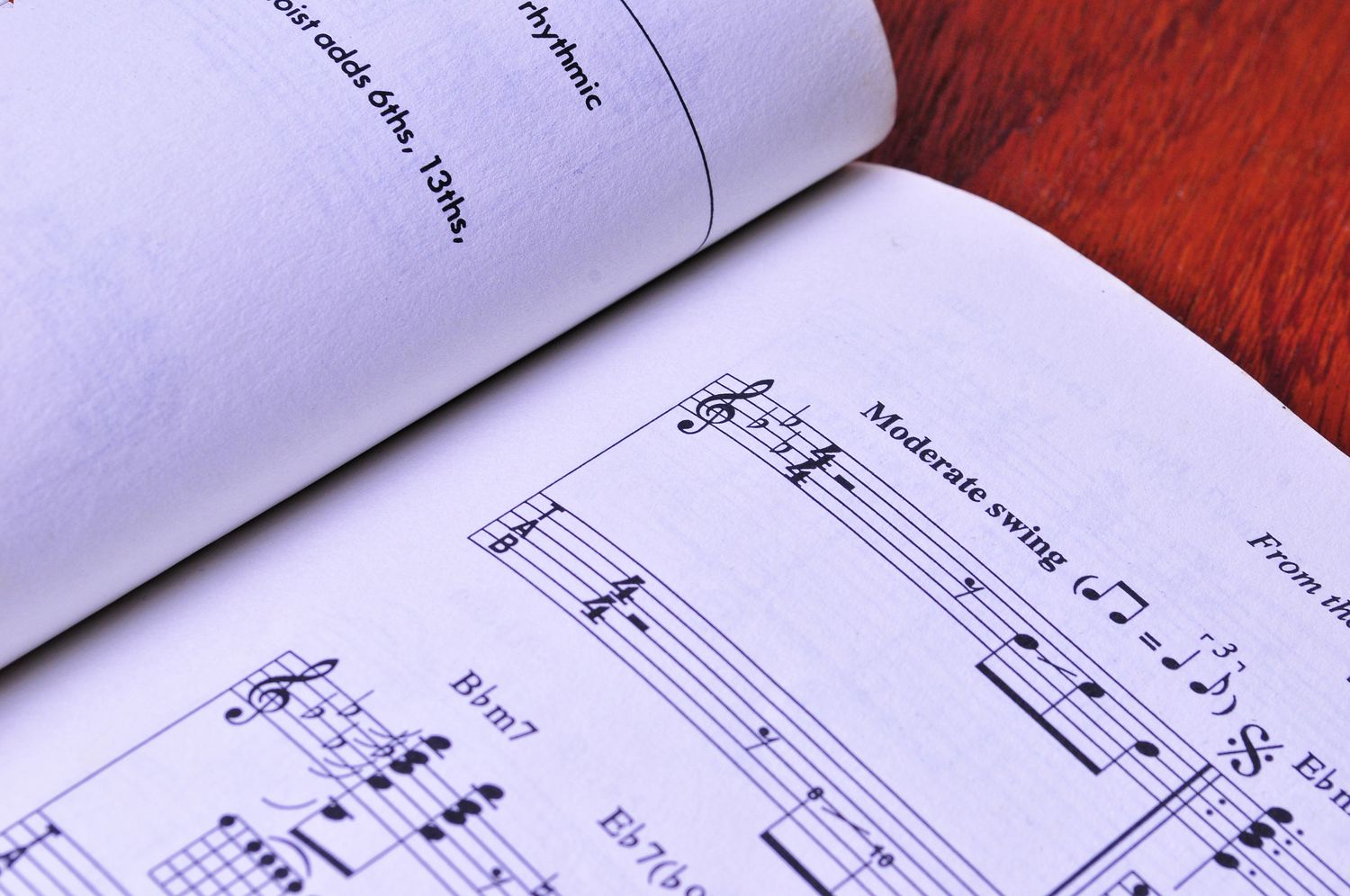

Music Theory
What Is Taught In Music Theory?
Published: February 1, 2024
Discover what is taught in music theory and gain a comprehensive understanding of the principles and concepts that form the foundation of this field. Enhance your knowledge of music through the study of scales, chords, notation, harmony, rhythm, and more.
(Many of the links in this article redirect to a specific reviewed product. Your purchase of these products through affiliate links helps to generate commission for AudioLover.com, at no extra cost. Learn more)
Table of Contents
Introduction
Music theory is the study of the fundamental principles and elements that make up music. It explores the structure, notation, harmony, and composition of music, providing a framework for understanding and analyzing the various components that create a musical piece. Whether you are a musician, composer, music student, or simply someone who appreciates music, understanding music theory can greatly enhance your appreciation and enjoyment of the art form.
At its core, music theory provides a language for expressing and communicating musical ideas. Just as grammar and vocabulary form the basis of language, music theory provides the grammar and vocabulary of music. It helps musicians to understand the rules and conventions that govern musical composition, enabling them to communicate their musical ideas effectively.
Studying music theory involves learning about scales, keys, intervals, chords, melody, harmony, rhythm, meter, musical form, sight-reading, ear training, and much more. By understanding these concepts, musicians can analyze and interpret music, making informed choices in their performances. Additionally, music theory provides a solid foundation for music composition and improvisation, allowing musicians to create their own musical works.
While music theory can seem daunting at first, with its complex symbols and terminology, it is a valuable tool for any musician. It allows for a deeper understanding of the music being played or composed, enabling musicians to express themselves more effectively and connect with their audiences on a deeper level.
This article will delve into the various aspects of music theory, providing an overview of the topics covered and highlighting the practical applications of this knowledge. Whether you are a beginner exploring music theory for the first time or a seasoned musician looking to reinforce your understanding, this article will serve as a comprehensive guide to what is taught in music theory.
The Basics of Music Theory
Before diving into more advanced topics, it’s important to grasp the foundational concepts of music theory. These fundamentals form the building blocks of musical composition and understanding. Here are some key areas to explore:
- Pitch: Pitch refers to the perceived highness or lowness of a sound. In Western music, pitch is typically represented using a system of named notes that span an octave, such as A, B, C, etc. These notes can be further divided by adding sharps (#) or flats (b) to indicate higher or lower pitches respectively.
- Rhythm: Rhythm is the organization of musical sounds in time. It involves elements such as beat, meter, and tempo. A beat is the basic pulse or unit of time in music, while meter refers to the organization of beats into regular patterns, such as 4/4 or 3/4. Tempo indicates the speed at which the music is performed.
- Dynamics: Dynamics refers to the varying degrees of loudness and softness in music. Common dynamic markings include piano (soft), forte (loud), mezzo piano (moderately soft), and mezzo forte (moderately loud). These markings help convey the expressive qualities of a musical composition.
- Notation: Music notation is the system of writing music using symbols and characters. It provides a standardized way to represent pitch, rhythm, dynamics, and other musical elements on sheet music. Common notation symbols include treble and bass clefs, notes, rests, and various markings that indicate articulation, expression, and dynamics.
- Time Signatures: Time signatures indicate the organization of beats and accents within a piece of music. The most common time signature is 4/4, also known as common time, where there are four beats in a measure and the quarter note receives one beat. Other time signatures, such as 3/4 or 6/8, have different rhythmic patterns and lend distinct musical feels.
Understanding these basic concepts of music theory provides a solid foundation for further exploration. They lay the groundwork for understanding melody, harmony, and other more advanced topics in music theory. With a grasp of these fundamental elements, you’ll be better equipped to analyze, perform, and create your own music.
Notation and Symbols
Music notation is a visual representation of musical ideas and concepts. It allows musicians to communicate and interpret music accurately. Understanding notation and symbols is an essential part of music theory. Here are some key aspects to explore:
- Staff: The staff is a set of horizontal lines and spaces on which music is written. It consists of five lines and four spaces, each representing a specific pitch. Notes, rests, and other symbols are placed on or between these lines and spaces to denote pitch and duration.
- Clefs: Clefs are symbols placed at the beginning of the staff to indicate the pitch range of the notes. The most common clefs are the treble clef (used for higher-pitched instruments like the piano or violin) and the bass clef (used for lower-pitched instruments like the cello or double bass). Clefs provide a reference point for reading notes on the staff.
- Notes: Notes are symbols used to represent musical pitches. They are placed on the staff in different positions, indicating the pitch and duration of a specific sound. Notes can be categorized into different types, such as whole notes, half notes, quarter notes, eighth notes, and so on, depending on their duration.
- Rests: Rests are symbols used to represent periods of silence in music. They indicate when a musician should pause and not produce any sound. Rests come in various durations, similar to notes, and are written on the staff in the same way as notes.
- Accidentals: Accidentals are symbols placed before a note to modify its pitch. The most common accidentals are sharps (#) and flats (b), which raise or lower the pitch respectively. There is also the natural sign (♮), which cancels any previous accidental and returns the note to its original pitch.
- Dynamics and Expressions: Various symbols and markings are used to indicate dynamics (volume) and expressive techniques in music. For example, the “p” symbol indicates piano (soft), while “f” indicates forte (loud). Additionally, other symbols such as crescendo (increase in volume) and decrescendo (decrease in volume) help convey the desired expression and interpretation of a musical passage.
Mastering notation and symbols in music theory allows musicians to accurately read, interpret, and perform musical compositions. It provides a universal language for musicians to communicate their musical ideas and collaborate effectively. Whether you’re reading sheet music, composing your own music, or studying a musical piece, understanding notation and symbols is critical for musical literacy and expression.
Scales and Keys
Scales and keys are fundamental concepts in music theory that play a vital role in creating melodies, harmonies, and structures within a piece of music. They provide a framework for understanding and organizing musical notes. Let’s explore more about scales and keys:
- Scales: A scale is a sequence of notes arranged in ascending or descending order of pitch. It provides the foundation for melodies and harmonies. The most common scale in Western music is the major scale, which consists of seven different notes arranged in a specific pattern of whole steps (W) and half steps (H). Other types of scales include the minor scale, pentatonic scale, blues scale, and modes.
- Tonality and Keys: Tonality refers to the relationship of notes within a scale or key. A key is a specific scale and its associated chords and harmonies. The key signature is indicated by sharps or flats placed at the beginning of each staff line. The major and minor keys are the most commonly used tonalities in Western music. For example, the key of C major represents the C major scale, while the key of A minor represents the A minor scale. Key signatures determine the notes used within a piece and provide a sense of tonal center and harmonic stability.
- Modulation: Modulation is the process of changing from one key to another within a musical piece. It adds interest and variety to a composition. Modulations can occur smoothly or abruptly, and they provide a sense of tension and resolution. Understanding key relationships and modulations is crucial for analyzing and interpreting more complex musical compositions.
- Chords and Harmonies: Scales and keys form the basis for chords and harmonies. Chords are a combination of three or more notes played simultaneously, while harmonies refer to the relationship between different chords within a musical piece. Chord progressions within a key provide the harmonic structure of a composition. Understanding the relationships between chords within a key is essential for improvisation, composition, and arranging music.
Scales and keys are fundamental concepts in music theory that provide a framework for understanding and organizing musical notes and creating melodic and harmonic structures. By mastering scales and keys, musicians can better analyze, interpret, and create music, and communicate their musical ideas more effectively.
Intervals and Chords
Intervals and chords are essential components of music theory that contribute to the melodic and harmonic aspects of music. They involve the relationship between two or more notes and play a significant role in creating tension, release, and overall musical structure. Let’s explore more about intervals and chords:
- Intervals: An interval is the distance between two notes in terms of pitch. It can be described as a measurement of the distance in steps (half-steps or whole-steps) between two pitches. Intervals can be classified as major, minor, perfect, augmented, or diminished, depending on the number of steps between the two notes. Understanding intervals helps musicians identify the melodic relationship between notes and analyze the harmonic structure of a composition.
- Chords: A chord is a combination of three or more notes played simultaneously. It is the foundation of harmony in music. Chords are built upon the notes of a scale and are classified based on their structure and tonal qualities. The most common types of chords include major chords, minor chords, diminished chords, and augmented chords. Chords provide the harmonic background and support for melodies and can evoke different emotions and moods within a musical piece.
- Triads: Triads are three-note chords consisting of a root note, a third interval, and a fifth interval above the root. They are the basic building blocks of chords and can be major, minor, augmented, or diminished. Understanding triads is essential for harmonizing melodies and creating strong harmonic progressions.
- Seventh Chords: Seventh chords are four-note chords that add a seventh interval on top of a triad. They have a richer and more complex sound. Common seventh chords include major seventh chords, minor seventh chords, dominant seventh chords, and diminished seventh chords. Seventh chords are often used to add color and tension to a musical progression.
- Chord Progressions: Chord progressions are sequences of chords that create the harmonic structure of a piece of music. They involve the movement from one chord to another. Understanding common chord progressions and their harmonic function is essential for composition, improvisation, and arranging music. Chord progressions provide a sense of stability and tension in a musical piece.
Intervals and chords are crucial elements in music theory as they contribute to the melodic, harmonic, and structural aspects of music. By understanding and analyzing intervals and chords, musicians can create intricate melodies, harmonies, and chord progressions that evoke specific emotions and provide the foundation for musical expression.
Melody and Harmony
Melody and harmony are two fundamental elements of music that work together to create a rich and engaging musical experience. They are essential components of music theory that contribute to the overall structure, emotion, and expression of a composition. Let’s explore more about melody and harmony:
- Melody: A melody is a sequence of notes that form a musical phrase or line. It is the most prominent element in a piece of music and is typically sung or played by a single voice or instrument. Melodies are created by combining pitches with rhythm, dynamics, and other expressive elements. They are memorable and recognizable aspects of a composition that listeners can easily sing or hum along to. Melodies can be simple or complex, conveying various emotions and moods.
- Harmony: Harmony refers to the simultaneous sounding of two or more notes to create chords and the relationship between those chords. It provides support and depth to melodies. Harmonies are created by combining different pitches, intervals, and chords. They can be consonant (stable and pleasing to the ear) or dissonant (tense and unstable). Harmonies contribute to the overall texture and color of a musical piece and play a crucial role in creating emotional impact.
- Counterpoint: Counterpoint is the technique of combining multiple melodic lines or voices that are independent yet harmonically related. It involves creating a harmonious interplay between melodies. Counterpoint adds depth, complexity, and texture to music, allowing for intricate harmonies and engaging musical interactions.
- Texture: Texture refers to the relationship between different musical elements in a composition. It can be categorized as monophonic (a single melodic line without accompaniment), homophonic (a melody with accompanying chords), or polyphonic (multiple independent melodic lines occurring together). Understanding texture is essential for analyzing and interpreting the complexity and arrangements of a piece of music.
- Chordal Accompaniment: Chordal accompaniment is the use of chords to support a melodic line. It involves playing or singing chords that harmonize with the melody, providing a harmonic background and support. Chordal accompaniment adds richness and fullness to the overall sound of a composition and is commonly used in various genres and styles of music.
Melody and harmony are interconnected elements of music that combine to create beautiful, expressive, and meaningful compositions. By understanding and focusing on these elements, musicians can create captivating melodies, harmonies, and overall musical structures that resonate with audiences and evoke emotional responses.
Rhythm and Meter
Rhythm and meter are crucial aspects of music that give it shape, structure, and a sense of time. They govern the timing and organization of musical sounds, creating patterns and grooves that drive the overall feel and energy of a composition. Let’s delve into rhythm and meter and their significance in music theory:
- Rhythm: Rhythm is the arrangement of durations and accents within a musical piece. It is the rhythmic patterns created by the duration of notes and rests. Rhythm provides the foundation for the groove and feel of a piece of music, making it dynamic and engaging. It encompasses elements such as beat, tempo, syncopation, and rhythmic subdivisions. Understanding rhythm is essential for musicians to perform and interpret music accurately.
- Meter: Meter is the organization of beats into regular patterns or measures. It establishes a sense of stability and structure within a musical piece. The most common meter in Western music is 4/4, also known as common time, where there are four beats in a measure, with the quarter note receiving one beat. Other common meters include 3/4 (waltz), 6/8 (compound meter), and 2/4 (cut time). Meter helps musicians count and interpret rhythmic patterns and provides a framework for coordinating performances.
- Beat and Tempo: The beat is the basic unit of time in music. It provides the underlying pulse that moves the music forward. Tempo refers to the speed at which the music is performed, often indicated by terms such as adagio (slow), allegro (fast), or moderato (moderate). Understanding beat and tempo helps musicians establish and maintain a consistent rhythmic feel throughout a piece.
- Rhythmic Subdivisions: Rhythmic subdivisions refer to the division of beats into smaller units. Common subdivisions include eighth notes, sixteenth notes, and their corresponding rests. By understanding and accurately executing subdivisions, musicians can perform complex rhythms and syncopated patterns with precision.
- Syncopation: Syncopation occurs when accents fall on off-beats or weak beats, creating a rhythmic tension and interest. It adds a sense of groove and unpredictability to music. Understanding syncopation and being able to execute it skillfully enhances the rhythmic complexity and excitement of a composition.
Rhythm and meter provide the framework for musical timing and organization. By mastering rhythm and understanding how it works within a specific meter, musicians can create compelling, rhythmic patterns and grooves that captivate and move audiences. Rhythm and meter lay the foundation for dynamic and expressive musical performances.
Musical Form
Musical form refers to the structure and organization of a piece of music. It encompasses the arrangement and relationship of different musical sections and how they contribute to the overall composition. Understanding musical form is essential for composers, performers, and listeners, as it provides a framework for analyzing and appreciating the architecture of a musical work. Here are some common forms in music:
- ABA Form: Also known as ternary form, ABA form consists of three sections: an opening section (A), a contrasting middle section (B), and a return to the opening section (A). This form provides a sense of balance and contrast, often adopted in classical music compositions.
- Binary Form: Binary form consists of two distinct sections, often labeled as A and B. Unlike ABA form, binary form does not revisit the initial section. Each section presents different musical ideas, creating a clear contrast between them. Binary form is commonly found in dance music, marches, and some classical compositions.
- Sonata Form: Sonata form is a more complex and detailed structure commonly used in classical music compositions, particularly in sonatas and symphonies. It consists of several sections, including an exposition (which presents contrasting themes), a development (where the themes are developed and transformed), and a recapitulation (where the initial themes return). Sonata form allows for the exploration and development of melodic, harmonic, and thematic material.
- Rondo Form: Rondo form features a recurring main theme (A) interspersed with contrasting themes (B, C, D, etc.). The structure typically follows the pattern A-B-A-C-A. Rondo form creates a sense of familiarity and variation, while providing opportunities for the composer to explore different musical ideas.
- Theme and Variations: Theme and variations is a form where a main theme is presented and then followed by a series of variations. Each variation retains some elements of the original theme, while introducing new melodic, harmonic, or rhythmic ideas. This form allows for creativity and exploration within a consistent musical framework.
Musical form provides a roadmap for composers to organize their musical ideas and for performers to interpret and convey the intended structure of a piece. By understanding the different forms, musicians can analyze, appreciate, and communicate the expressive and structural elements inherent in a musical composition. Musical form adds depth and coherence to a piece of music, enhancing the listener’s experience and appreciation for the art form.
Sight-Reading and Ear Training
Sight-reading and ear training are essential skills for musicians that enhance their ability to perform, compose, and understand music. These skills enable musicians to interpret and reproduce music on the spot and develop a keen ear for pitch, melody, harmony, and rhythm. Let’s explore the importance of sight-reading and ear training in music theory:
- Sight-Reading: Sight-reading is the ability to read and perform a piece of music at first sight without prior practice. It requires musicians to quickly process notation symbols, pitch, rhythm, dynamics, and other musical elements. Sight-reading skills are crucial for ensemble playing, auditions, and performing in various musical settings. Practicing sight-reading regularly helps musicians become more fluent in reading and interpreting music, resulting in more confident and accurate performances.
- Ear Training: Ear training involves developing a strong sense of pitch, melody, harmony, and rhythm through focused listening and practice. It helps musicians recognize and reproduce musical elements by ear, without relying solely on written notation. Ear training enhances musicians’ ability to improvise, transcribe music, and play by ear. It also allows for a deeper understanding and appreciation of music, as musicians can identify and analyze the musical components in a piece.
- Interval Recognition: Ear training includes interval recognition, which involves the ability to identify and reproduce the distance between two pitches. This skill plays a crucial role in sight-singing, transcribing melodies, harmonizing, and recognizing chord progressions. Interval recognition builds a strong foundation for melodic and harmonic understanding.
- Rhythmic Awareness: Ear training also focuses on developing rhythmic accuracy and awareness. Musicians learn to discern different rhythmic patterns, subdivisions, and syncopations by ear. This skill aids in playing in sync with other musicians, improvising, and understanding complex rhythmic structures in various musical genres.
- Chord Progression Identification: Ear training involves the ability to identify and analyze chord progressions by ear. Musicians develop a sense of tonal center and can recognize the harmonic movement within a piece. This skill is invaluable for playing in a band or ensemble, composing, and improvising.
Both sight-reading and ear training complement each other and contribute to overall musicianship. They allow musicians to interact with music more intuitively, interpret pieces accurately, and develop a deeper understanding of musical concepts. Consistent practice and training in sight-reading and ear training enable musicians to broaden their musical capabilities and become more versatile and proficient in their craft.
Analyzing and Understanding Music
Analyzing and understanding music is a core aspect of music theory that involves studying the structure, style, and artistic elements of a musical composition. It allows musicians, composers, and music enthusiasts to explore the deeper meaning and craftsmanship behind a piece of music. Here are some key components of analyzing and understanding music:
- Formal Analysis: Formal analysis involves studying the structure and organization of a musical composition. It focuses on identifying and interpreting the different sections, transitions, and relationships within the piece. By analyzing the form, musicians can gain insights into the composer’s intentions, distinguishing recurring themes, and understanding how the musical ideas are developed and interwoven.
- Harmonic Analysis: Harmonic analysis focuses on dissecting the chord progressions, tonal relationships, and harmonic function within a composition. It involves identifying the underlying chords, their inversions and voicings, and their role in creating tension, resolution, and overall harmonic structure. Harmonic analysis provides a deeper understanding of the underlying harmonic framework and helps musicians interpret and perform the music more expressively.
- Melodic Analysis: Melodic analysis involves examining the melodic lines, their contour, phrasing, and relationship to the underlying harmony. It explores the motifs, sequences, and variations that shape the melody. Melodic analysis allows musicians to perceive the arc and development of the melody, highlighting significant melodic gestures and expressive elements.
- Textural Analysis: Textural analysis refers to studying the interplay and balance of different musical layers or voices within a composition. It involves analyzing the musical texture, whether it is monophonic, polyphonic, or homophonic, and understanding how the different parts contribute to the overall musical texture. Textural analysis helps musicians appreciate the complexity and interaction of musical voices.
- Stylistic Analysis: Stylistic analysis involves examining the characteristics and conventions of a specific musical style or genre. It focuses on identifying the distinguishing elements, techniques, and idioms that are representative of that style. Stylistic analysis enables musicians to understand the historical and cultural context of the music, interpret it authentically, and make informed artistic choices.
Analyzing and understanding music enriches the musical experience by uncovering the artistic choices, craftsmanship, and emotional depths within a composition. It enables musicians to develop a deeper connection with the music they perform or listen to and allows for a more nuanced interpretation and expression. By diving into the various aspects of music, musicians can gain a profound appreciation for the complexities and beauty that reside within the notes, rhythms, and harmonies.
Applying Music Theory in Composition and Improvisation
Music theory serves as a vital tool for composers and improvisers, providing a framework for creativity and the development of musical ideas. By applying music theory principles, musicians can effectively structure compositions, create compelling melodies, harmonies, and rhythms, and make informed improvisational choices. Here are some ways in which music theory can be applied in composition and improvisation:
- Harmonizing Melodies: Music theory enables composers to harmonize melodies by selecting appropriate chords and understanding chord progressions. By analyzing the key and functional harmony, composers can create harmonies that enhance the emotional impact and support the melodic line.
- Chord Progressions: Music theory provides a wealth of knowledge about chord progressions, their functions, and how they establish a sense of tonal center. Composers and improvisers can use this knowledge to create harmonic sequences that are musically compelling and emotionally satisfying.
- Modulation and Key Changes: Understanding modulation allows composers to transition from one key to another smoothly. By employing modulation techniques, composers can introduce variety and interest into their compositions. Similarly, improvisers can apply modulation to explore new tonalities and add depth to their solos.
- Rhythmic Development: Music theory provides a framework for rhythmically developing musical ideas. Composers can experiment with rhythmic patterns, syncopations, and variations to create dynamic and engaging compositions. Improvisers can explore rhythmic subdivisions, accent patterns, and syncopations to add excitement and expression to their solos.
- Structural and Formal Considerations: Music theory equips composers with the knowledge to structure and organize their compositions effectively. Understanding musical forms such as ABA, binary, or sonata form helps guide the development and arrangement of musical sections. Composers can use this knowledge to create cohesive and engaging compositions.
- Modal and Scale Exploration: Music theory introduces various modes and scales that offer distinct musical flavors. Composers and improvisers can experiment with different scales and modes to create unique melodies, harmonies, and improvisational ideas. This knowledge expands their palette of musical possibilities.
By applying music theory in composition and improvisation, musicians can approach their creative process with a deeper understanding of the structures and concepts that underpin music. This knowledge empowers them to make conscious choices, experiment with different musical elements, and create more cohesive and compelling musical works. It allows composers and improvisers alike to unlock their artistic potential and explore new realms of musical expression.
Conclusion
Music theory is a vast and multifaceted discipline that forms the foundation of our understanding of music. It enables musicians to communicate, analyze, interpret, and create music more effectively, enriching their musical experiences and elevating their craft. With an understanding of music theory, musicians can unlock the nuances and intricacies of melodies, harmonies, rhythms, and structures, allowing for more expressive performances and compositions.
From the basics of notation and symbols to the complexities of analyzing musical forms and harmonies, music theory provides a comprehensive framework for exploring the elements of music. It serves as a guide, helping musicians navigate the intricacies of scales, keys, intervals, chords, rhythm, meter, and more. By applying music theory principles, musicians can compose captivating melodies, harmonize effectively, and make informed improvisational choices.
Furthermore, studying music theory enhances our appreciation and understanding of the music we listen to. It allows us to analyze and dissect compositions, discerning the intentions, creativity, and craftsmanship of the composers. Music theory provides a language through which we can communicate our thoughts and interpretations, fostering deeper connections between performers and audiences.
While music theory can at times seem complex and daunting, its rewards are immense. The analytical and creative skills developed through studying music theory enable musicians to express themselves with clarity and precision. Whether you are a professional musician, a student, or a music enthusiast, delving into music theory opens up a world of possibilities for exploring and enjoying the beauty and complexity of music.
In conclusion, music theory is an invaluable tool for musicians of all levels and backgrounds. It helps us understand the inner workings of music, enabling us to interpret, perform, compose, and appreciate music with greater depth and insight. By embracing music theory, we can embark on a lifelong journey of musical discovery and growth, constantly expanding our horizons and evolving as musicians.

